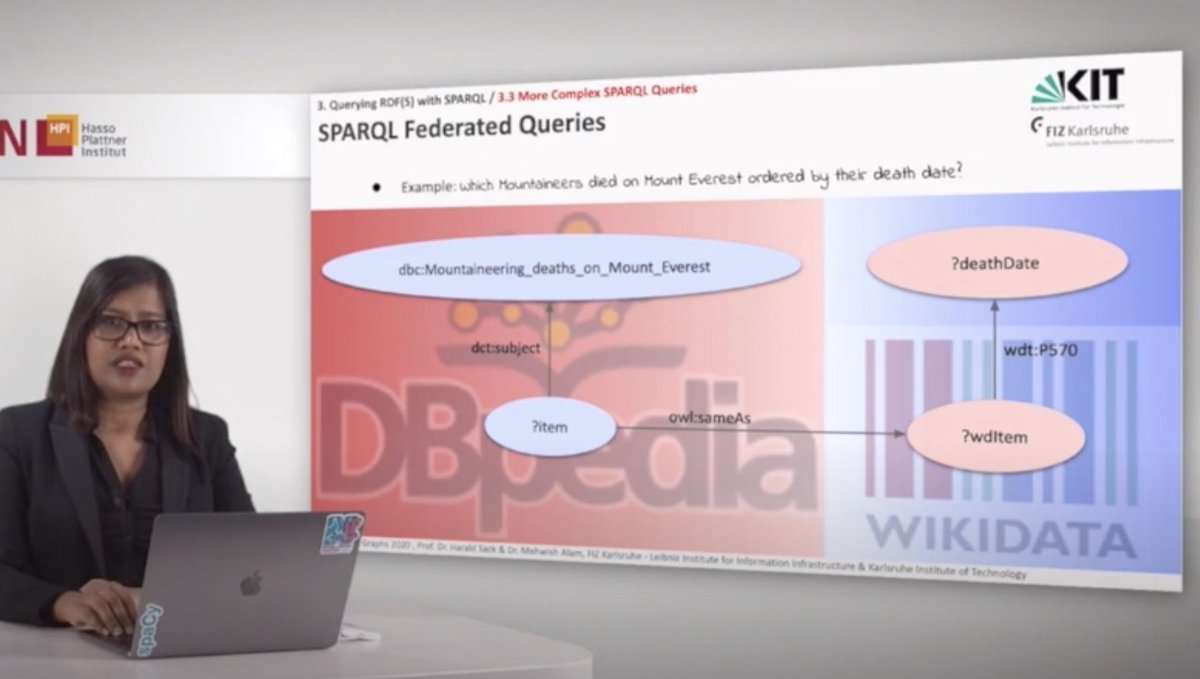Parts of the world are still in lockdown, while others are returning to some semblance of normalcy. Either way, while the last few months have given some things pause, they have boosted others. It seems like developments in the world of Graphs are among those that have been boosted.
An abundance of educational material on all things graph has been prepared and delivered online, and is now freely accessible, with more on the way.
Graph databases have been making progress and announcements, repositioning themselves by a combination of releasing new features, securing additional funds, and entering strategic partnerships.
A key graph database technology, RDF*, which enables compatibility between RDF and property graph databases, is gaining momentum and tool support.
And more cutting edge research combining graph AI and knowledge graphs is seeing the light, too. Buckle up and enjoy some graph therapy.
Stanford’s series of online seminars featured some of the world’s leading experts on all things graph. If you missed it, or if you’d like to have an overview of what was said, you can find summaries for each lecture in this series of posts by Bob Kasenchak and Ahren Lehnert. Videos from the lectures are available here.
 Stanford Knowledge Graph Course Not-Quite-Live-Blog
Stanford Knowledge Graph Course Not-Quite-Live-Blog
Stanford University’s computer science department is offering a free class on Knowledge Graphs available to the public. Stanford is also making recordings of the class available via the class website.
Another opportunity to get up to speed with educational material: The entire program of the course “Information Service Engineering” at KIT - Karlsruhe Institute of Technology, is delivered online and made freely available on YouTube. It includes topics such as ontology design, knowledge graph programming, basic graph theory, and more.
 Information Service Engineering at KIT
Information Service Engineering at KIT
Knowledge representation as a prerequisite for knowledge graphs. Learn about knowledge representation, ontologies, RDF(S), OWL, SPARQL, etc.
Ontology may sound like a formal term, while knowledge graph is a more approachable one. But the 2 are related, and so is ontology and AI. Without a consistent, thoughtful approach to developing, applying, evolving an ontology, AI systems lack underpinning that would allow them to be smart enough to make an impact.
The ontology is an investment that will continue to pay off, argue Seth Earley and Josh Bernoff in Harvard Business Review, making the case for how businesses may benefit from a knowldge-centric approach
 Is Your Data Infrastructure Ready for AI?
Is Your Data Infrastructure Ready for AI?
Even after multiple generations of investments and billions of dollars of digital transformations, organizations struggle to use data to improve customer service, reduce costs, and speed the core processes that provide competitive advantage. AI was supposed to help with that.
Besides AI, knowledge graphs have a part to play in the Cloud, too. State is good, and lack of support for Stateful Cloud-native applications is a roadblock for many enterprise use-cases, writes Dave Duggal.
Graph knowledge bases are an old idea now being revisited to model complex, distributed domains. Combining high-level abstraction with Cloud-native design principles offers efficient “Context-as-a-Service” for hydrating stateless services. Graph knowledge-based systems can enable composition of Cloud-native services into event-driven dataflow processes.
Kubernetes also touches upon Organizational Knowledge, and that may be modeled as a Knowledge Graph.
 Graph Knowledge Base for Stateful Cloud-Native Applications
Graph Knowledge Base for Stateful Cloud-Native Applications
Extending graph knowledge bases to model distributed systems creates a new kind of information system, one intentionally designed for today’s IT challenges.
The Enterprise Knowledge Graph Foundation was recently established to define best practices and mature the marketplace for EKG adoption, with a launch webinar on June the 23rd.
The Foundation defines its mission as including adopting semantic standards, developing best practices for accelerated EKG deployment, curating a repository of reusable models and resources, building a mechanism for engagement and shared knowledge, and advancing the business cases for EKG adoption.
 Enterprise Knowledge Graph Maturity Model
Enterprise Knowledge Graph Maturity Model
The Enterprise Knowledge Graph Maturity Model (EKG/MM) is the industry-standard definition of the capabilities required for an enterprise knowledge graph. It establishes standard criteria for measuring progress and sets out the practical questions that all involved stakeholders ask to ensure trust, confidence and usage flexibility of data. Each capability area provides a business summary denoting its importance, a definition of the added value from semantic standards and scoring criteria based on five levels of defined maturity.
Enterprise Knowledge Graphs is what the Semantic Web Company (SWC) and Ontotext have been about for a long time, too. Two of the vendors in this space that have been around for the longer time just announced a strategic partnership: Ontotext, a graph database and platform provider, meets SWC, a management and added value layer that sits on top.
SWC and Ontotext CEOs emphasize how their portfolios are complementary, while the press release states that the companies have implemented a seamless integration of the PoolParty Semantic Suite™ v.8 with the GraphDB™ and Ontotext Platform, which offers benefits for many use cases.
#database #artificial intelligence #graph databases #rdf #graph analytics #knowledge graph #graph technology

